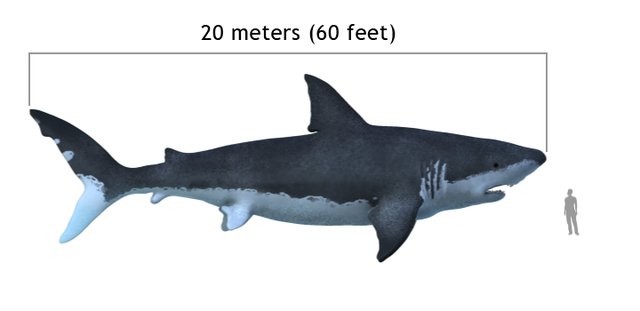Megalodon (Otodus megalodon) has been called by scientists as a "transoceanic super predator" based on 3D modeling in a new study, which claimed that the extinct ancient ocean predator was and is still the fastest shark that ever lived.
The simulation also showed that the Otudus megalodon can devour an orca or killer whale in just five bites.
This makes our current ocean apex predator to only look like a snack for the megalodon.
Despite the enormous size of the "super predators" and weight that can reach around 68 tons, the megalodon shark has been reported to possess the ultimate qualities of a top predator in a post-dinosaur era, even transcending to the contemporary era.
Being the largest shark to ever exist, the appearance and mobility of the transoceanic super predator has been revealed by scientists for the first time.
The 3D model was able to recreate or simulate the long-extinct shark based on data sample collected from fossilized teeth and vertebrate.
The data gave scientists a relatively complete picture of the diet, size, and speed of the ancient shark.
Prior to the research, the only basis of the megalodon's existence was the distinct appearance and sheer size of its fossilized teeth, which are its most abundant fossils.
Megalodon first emerged approximately over 20 million years ago and went extinct around 3.6 million years ago.
The exact cause of the super predator's disappearance is still unknown.
However, various literature suggests it was likely caused by the emergence of great white sharks (Carcharodon carcharias).
The prevailing theory suggested that the megalodons had to compete with Carcharodon for food.
Transoceanic Super Predator

New details of the megalodon were published in the journal Science Advances on Wednesday, August 17.
The 3D modelling used in the study was based on the challenge that the megalodons' bodies are rare preserved, even if there is an abundant of their teeth in the fossil record.
The researchers of the new paper estimate an adult O. megalodon could cruise than any shark species today and fully consume prey, including our modern apex predators.
In order to arrive at their conclusion, the model utilized a combine measurement of well-preserved vertebral column unearthed in Belgium and a set tooth discovered in the United States, as referenced by Live Science.
Megalodon: The Largest Fish
The megalodon dominated the seas for 13 million years after it first appeared and has been considered to be the largest fish, which can grow up to a maximum size of between 15 and 18 meters.
It is also three times longer than the largest recorded great white shark, according to the Natural History Museum (NHM).
Megalodon, which translates to "large tooth," was first discovered in the early 19tg century due to the animal's teeth that can reach 18 centimeters long.
By using the marine predator's teeth alone, scientists were able to reconstruct its size and even its diet.
The NHM said that a megalodon's diet are likely be whales and large fish, probably as well as other sharks.
In this context, their diet may range from as small as dolphins and as large as humpback whales.
It is unclear if megalodons fed on each other.
Related Article: Megalodon Sharks Are More Likely to Grow Larger in Cold Waters
© 2025 NatureWorldNews.com All rights reserved. Do not reproduce without permission.





